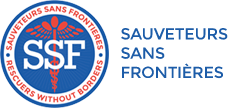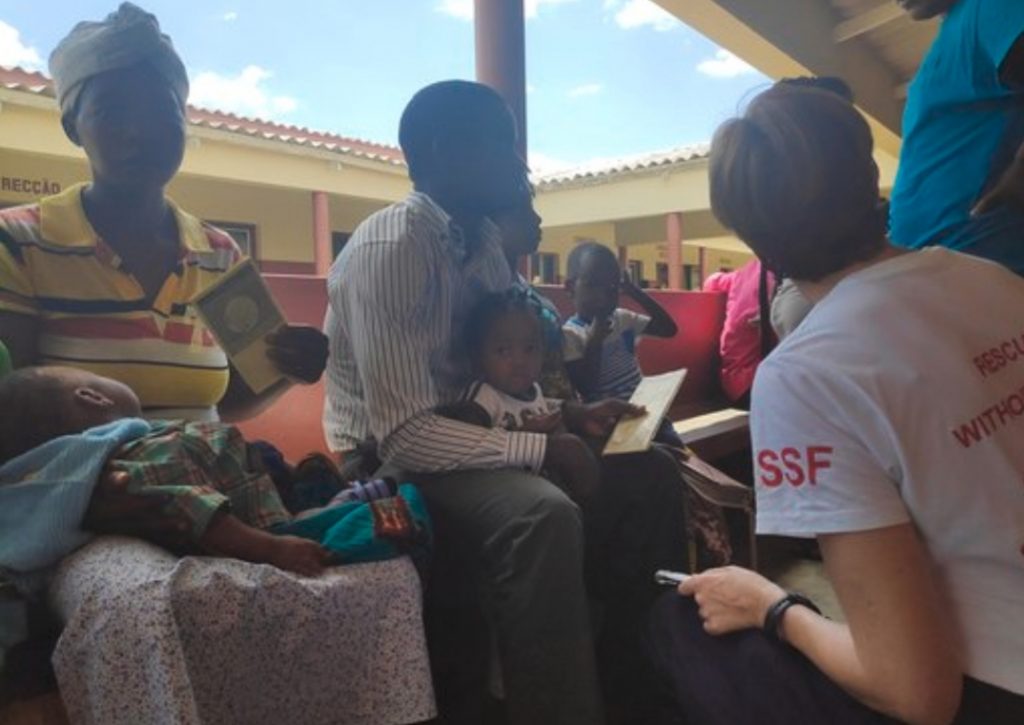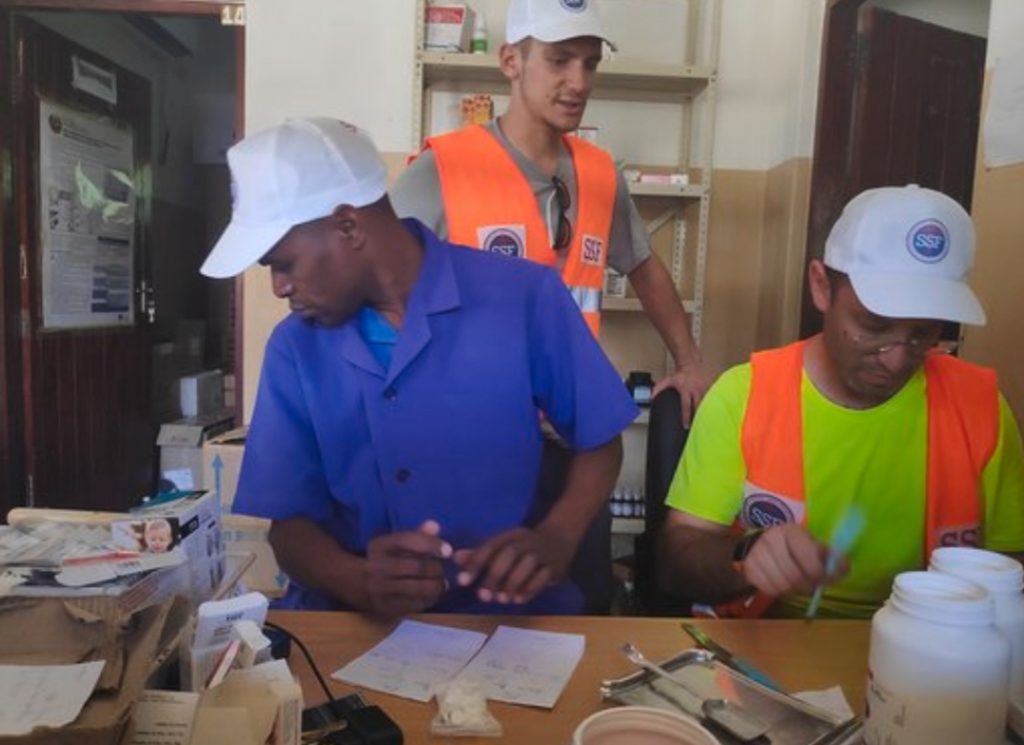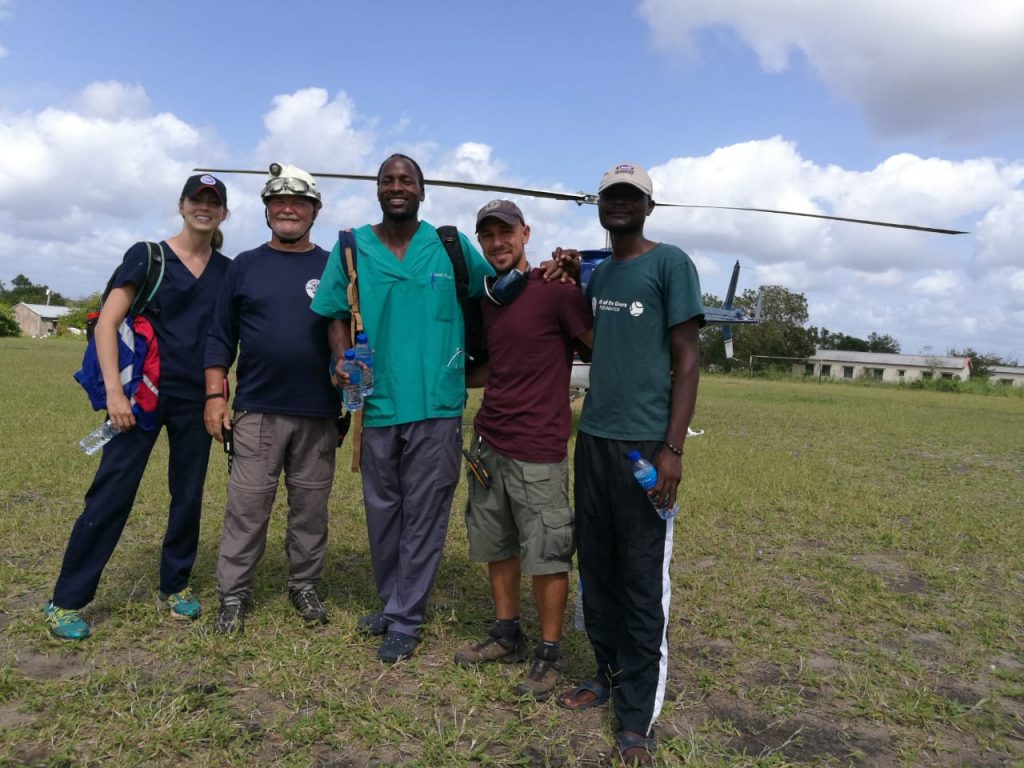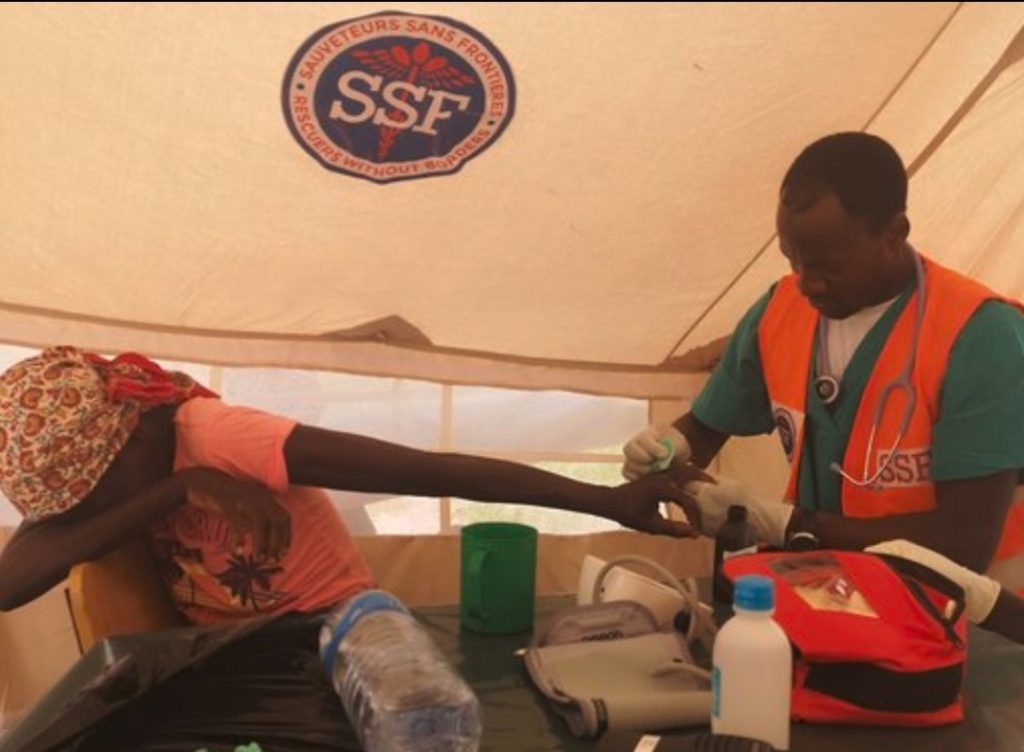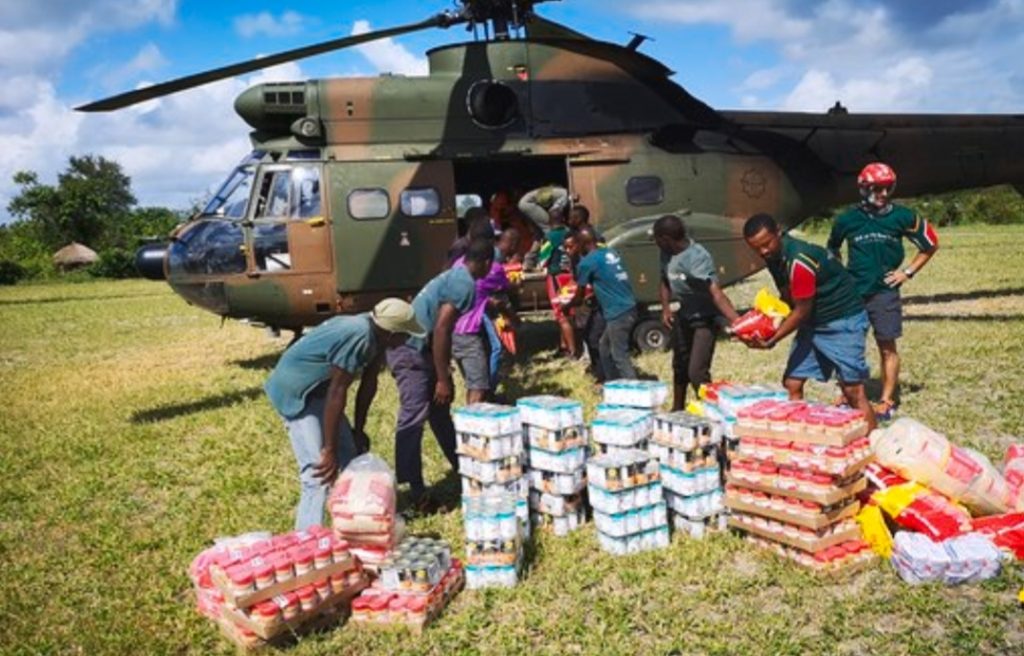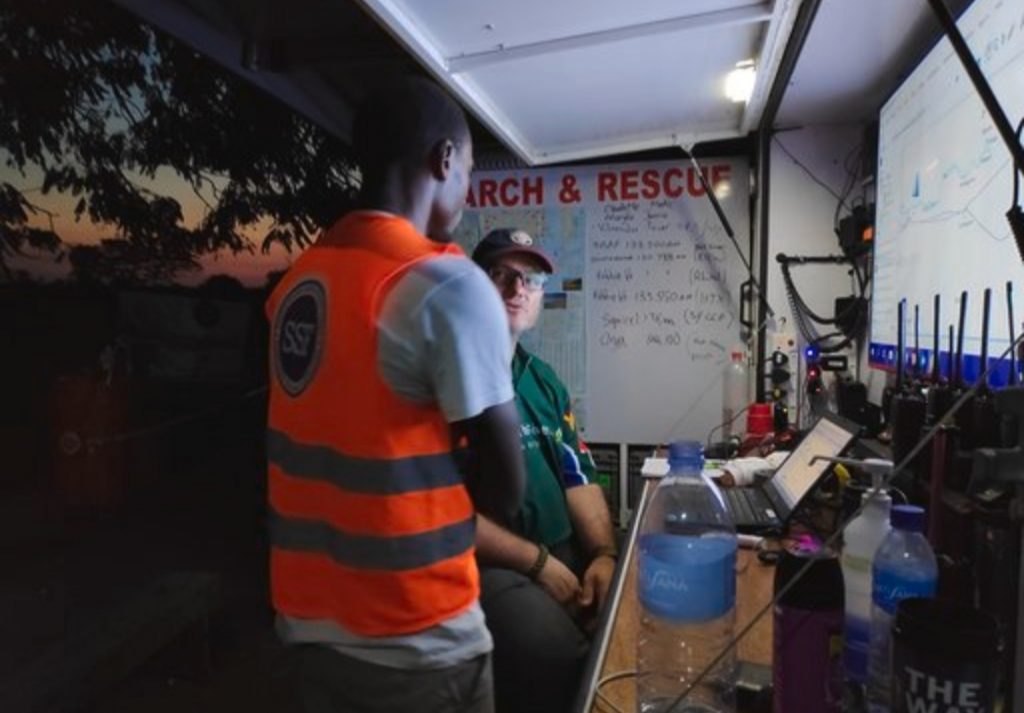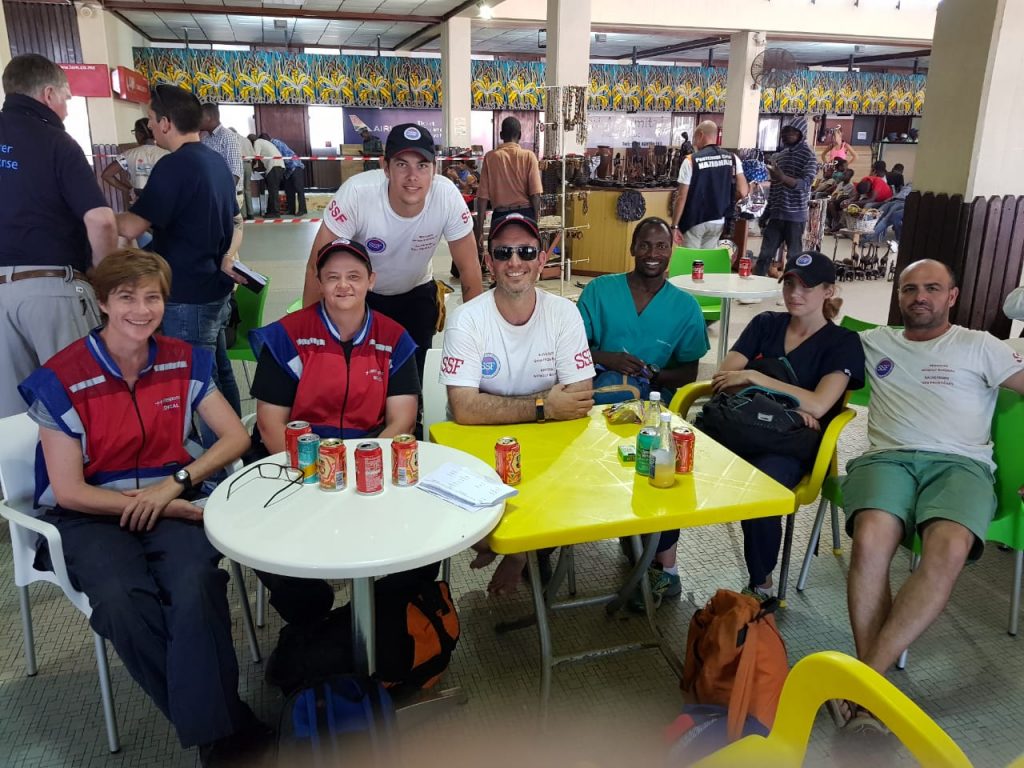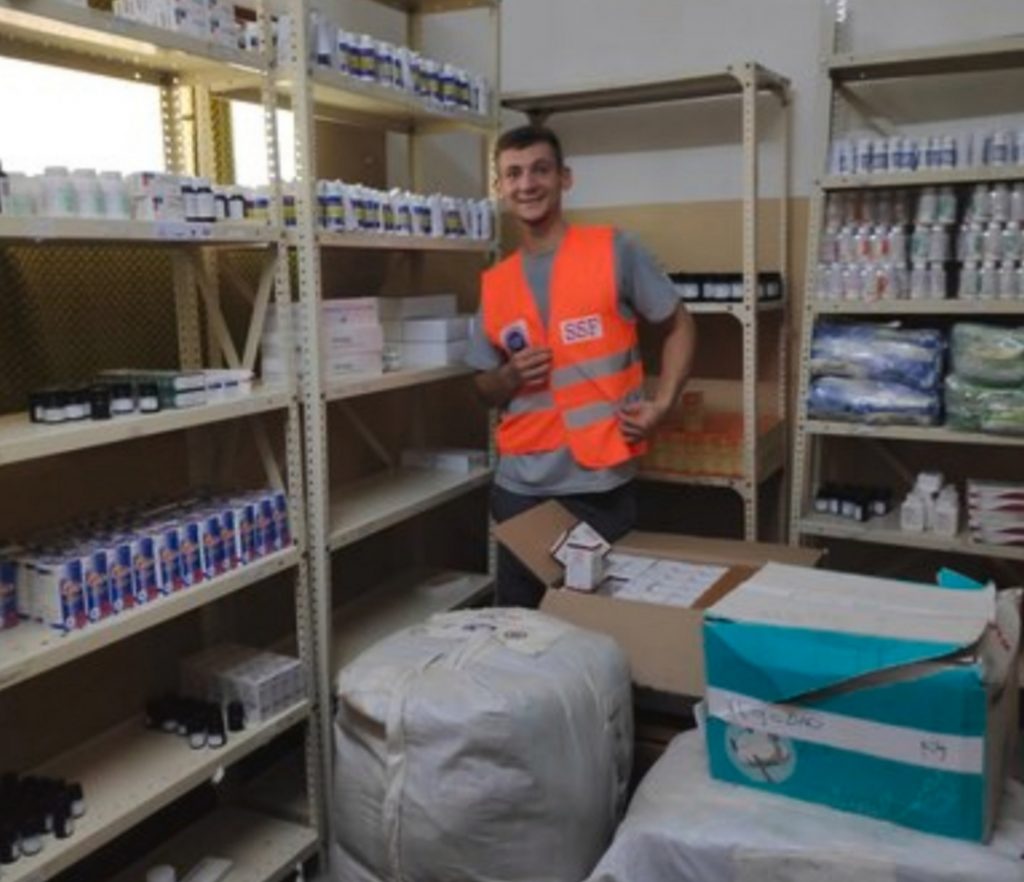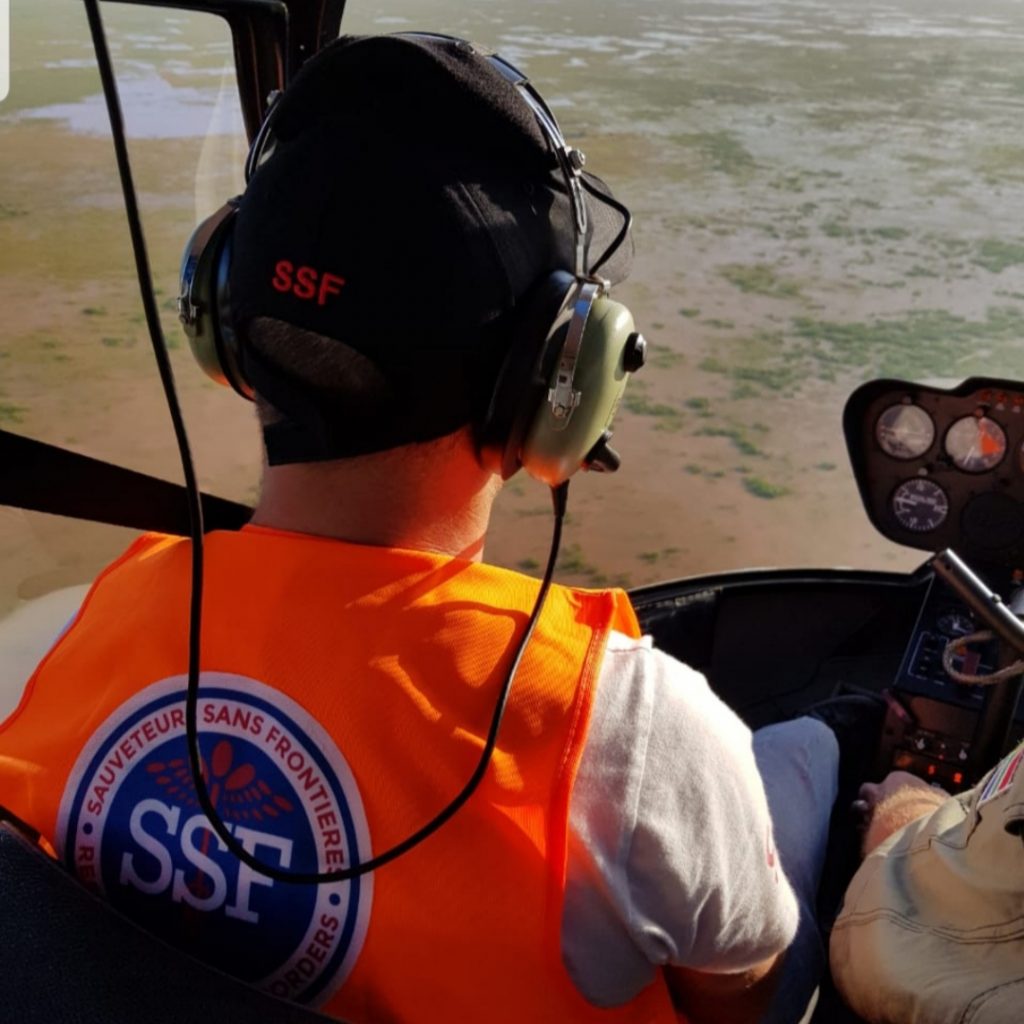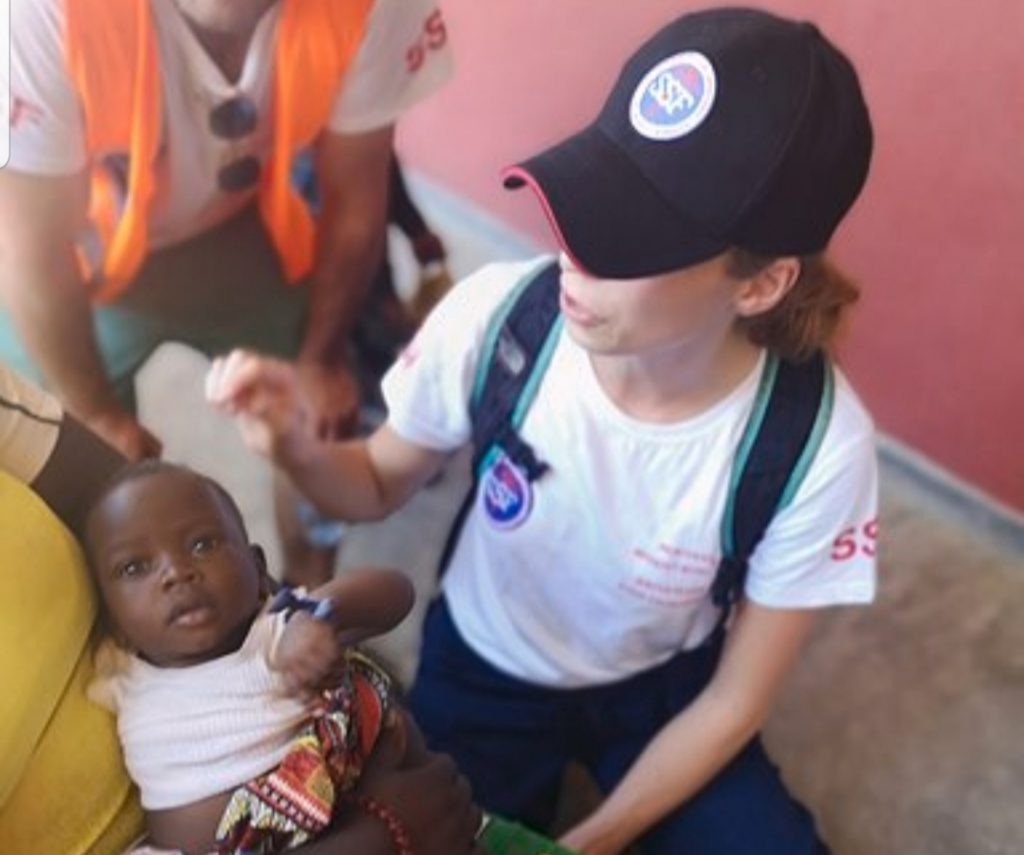The team arrived in Johannesburg, South Africa, on March 21, 2019, and met the South African doctors and paramedics who had agreed to contribute to the operation. When SSF conducts this type of emergency operation, we always try to work with local medical teams whenever possible. This time, we reached out to a South African NGO, Gift of the Givers.
The first information they shared was fully expected: all the roads leading to the area that bore the brunt of the cyclone were out of commission. Also, all the villages in that particular region needed urgent medical help.
15,000+ people were waiting on the roofs of houses, buses and churches to be evacuated.
Hundreds of thousands of people had lost their house to the cyclone. They all needed food and water. The main concern was now cholera.
Ahmad of Gift of the Givers confirmed they needed the help of medical personnel, and our team was more than welcome to help. This NGO also benefitted from the help of the military who had made helicopters available to them; it was in fact the only way to reach all these villages.
This collaboration with local organizations proved to be an excellent strategy, as it helped us reach the villages much faster. As a matter of fact, some NGOs had to wait almost a week in Beira because they had no way to reach the most remote villages.
The Gift emergency headquarters were located in Beira airport. During the first two days, I acted as Ahmad’s sidekick as he led the rescue efforts. In the mean time, our team of doctors and paramedics was helping the medical staff of Beira hospital –that had been hit by the cyclone too – treat hundreds of injured people.
On the third day, we made our way to Vilankulo, a 250-mile trip. We had to use a helicopter because the roads were still out of commission.
Once in Vilankulo, we were able to work in the local clinic that had 10 treatment rooms. We set up our work stations and a pharmacy with the medications we had brought with us.
Our second team set up a First Aid station in the clinic of a small village named Istakinya. We also helped the villagers install 10 sanitation facilities to prevent an outbreak of cholera. Leny, a Kenyan doctor who lives and works in Mozambique, was able to treat hundreds of injured people with the help of our 3 paramedics. A third team, with our nurse Mara, helped treat the injured in small villages where people didn’t want to leave out of fear they wouldn’t be able to go back because of the condition of the roads. Our teams also purchased food and water that they brought on the helicopters then distributed to these villagers who were cut off from the rest of the world. What we were able to accomplish: 1,500 injured people were treated 20 babies were delivered 15 metric tons of food were distributed to the villagers
